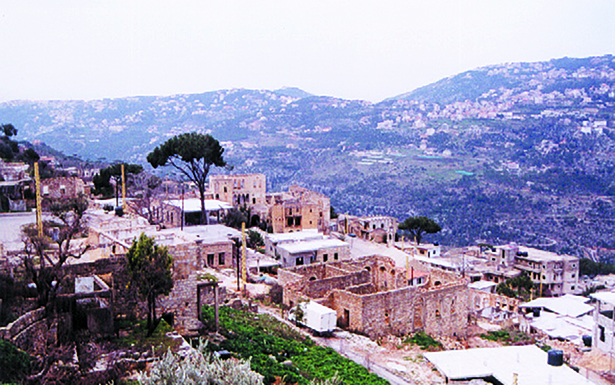Salima, Mount Lebanon, 2003
According to the UNDP Profile on Displacement in Lebanon, the seventeen-year civil war left more than 78,000 households damaged many beyond repair[1].
The Government of Lebanon set the return of the displaced as a priority necessary for reconciliation and sustainable peace. However, with the reconstruction efforts of the returning displaced, the stone built heritage of the villages of Mount Lebanon was disappearing fast, since the conservation law in Lebanon only protects building up to the 18th century.

Stopping the destruction of the stone houses and the building of apartment buildings in their place and preserving the character of the village while allowing the return of the displaced to happen, were at the core of our intervention in Salima.
Working as part of the N.G.O, Association Pour la Protection des Sites et Anciennes Demeures (A.P.S.A.D), a different approach to reconstruction was proposed in Salima. To safeguard the character and built heritage, we worked on many timeframes simultaneously and with a wide scope of stakeholders: the local inhabitants, Ministry of culture, Patrimoine sans Frontières, etc.
For full details: refer to “Salimah: A Story of Reconciliation between Built Heritage and Reconstruction.” Ninth IASTE Conference. December 2004 . Sharjah . Dubai.
[1] P.4, Profile of Internal Displacement: Lebanon, Norwegian Refugee Council/Global IDP Project, 2003.

